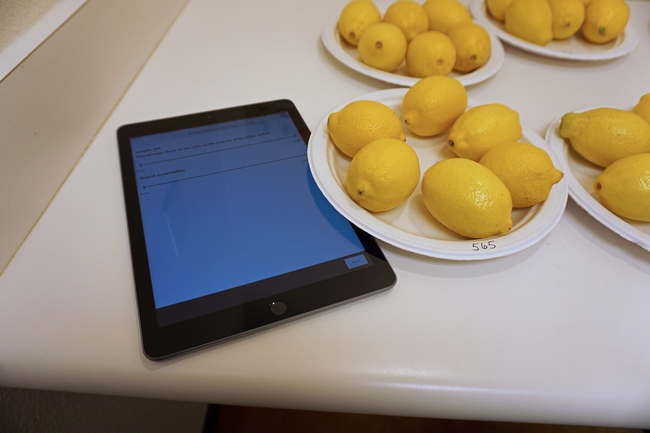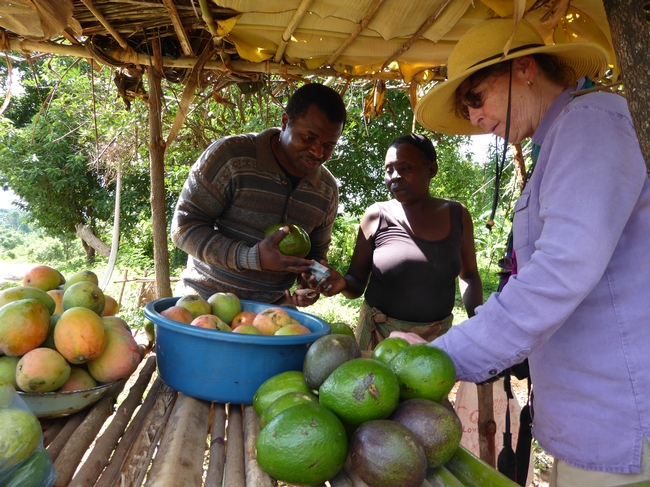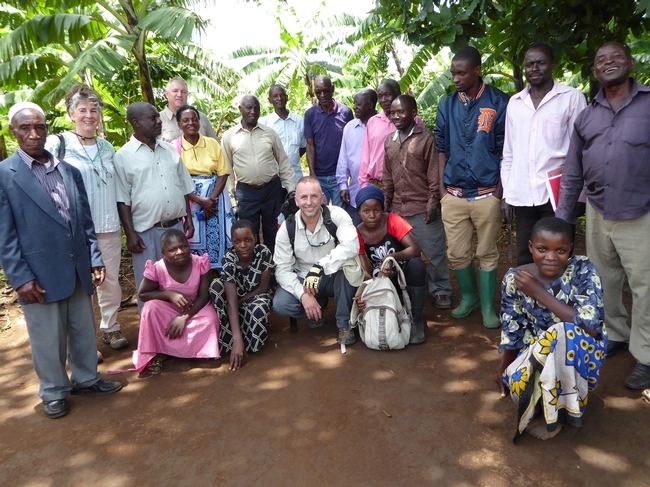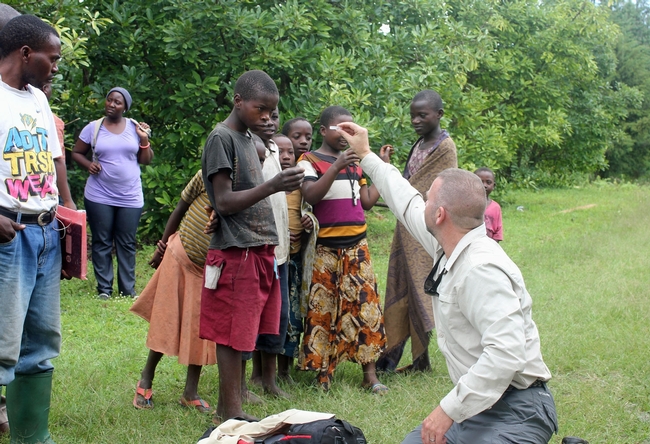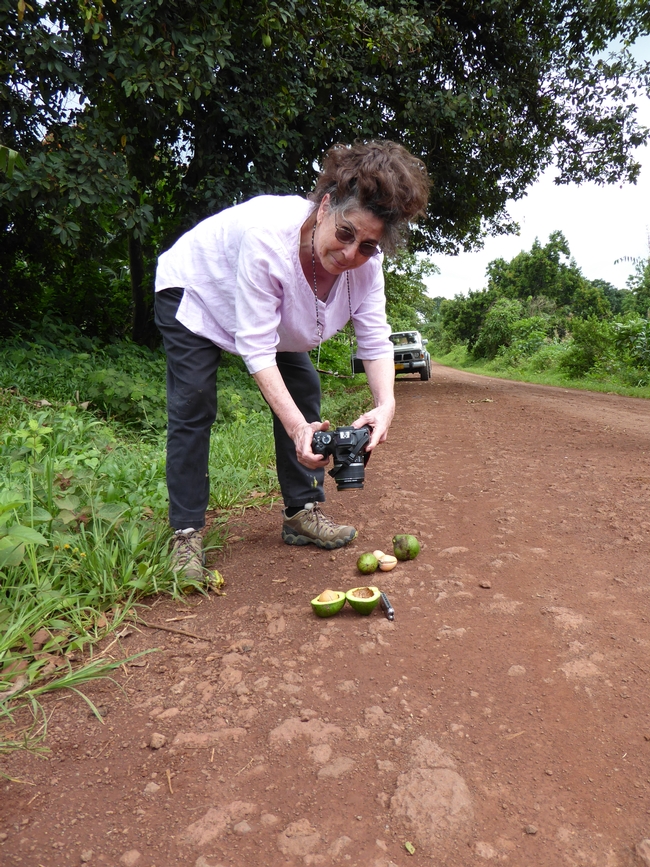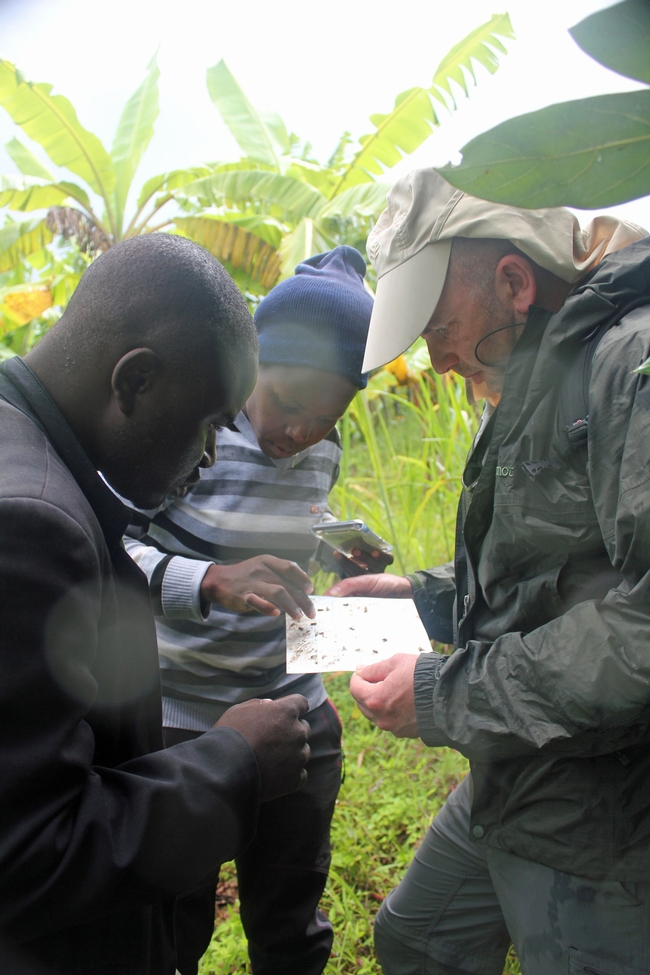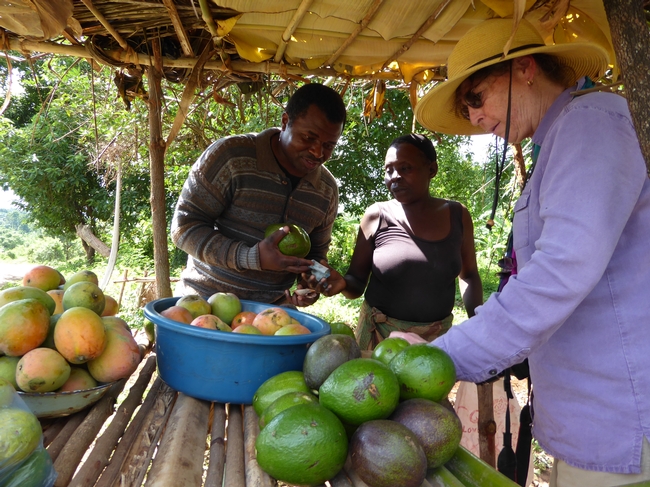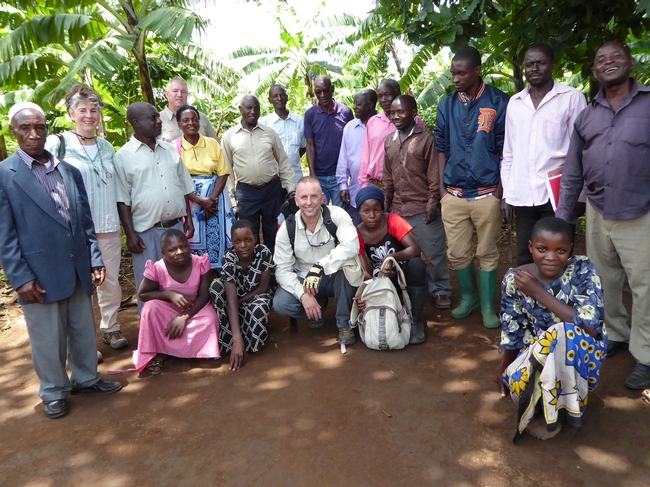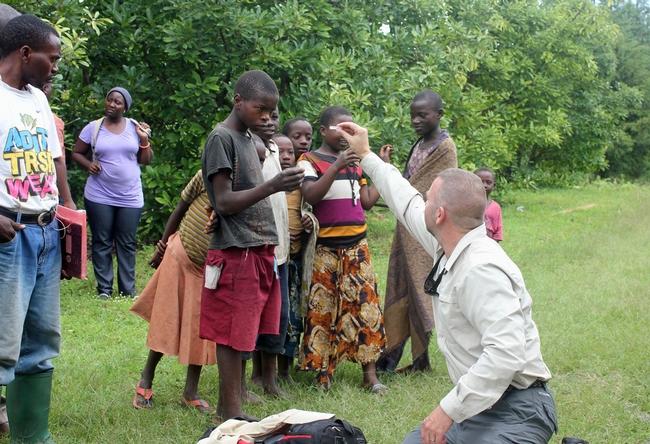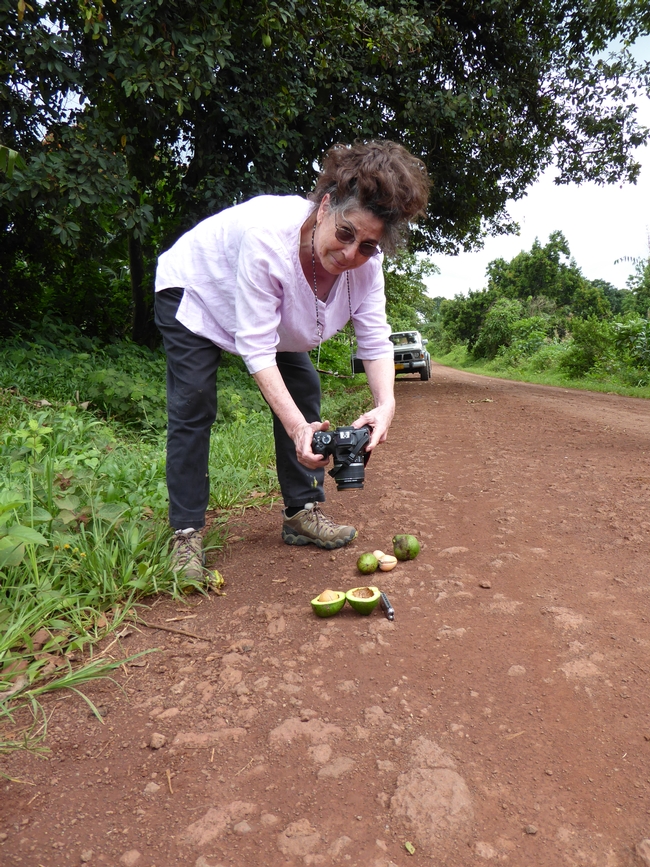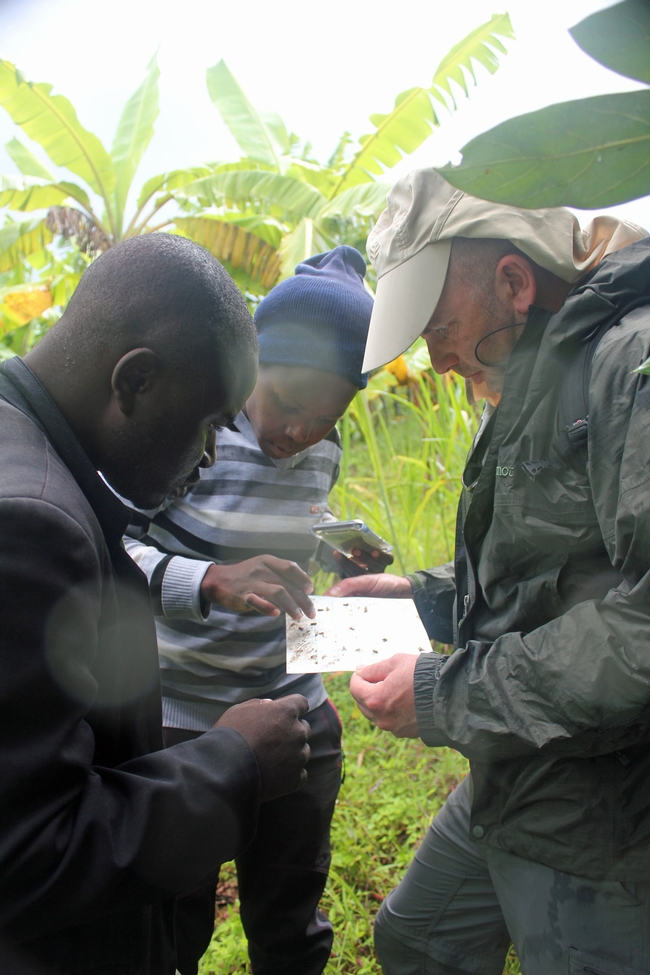Posts Tagged: Mary Lu Arpaia
Lemon water tasting at UC research center kicks off an 18-month citrus sensory study
What flavors do you detect in a sip of lemon water? Are there notes of sweetness, sour, off flavors or fresh citrus taste? Scientists at the UC Kearney Agricultural Research and Extension Center and the USDA want to know every subtle taste sensation for a research project continuing over the next 18 months.
Participants will taste the major types of citrus to confirm that treatments used to eliminate pests in overseas shipments don't have an impact on fruit enjoyment. Lemon tasting will be followed by mandarins, navel and Valencia oranges, and grapefruit.
“This work is critical for the citrus industry,” said Mary Lu Arpaia, UC Cooperative Extension specialist in subtropical fruit. “A huge amount of California citrus is exported, but if there are quarantined pests in the shipment, that triggers treatments with a fumigant.”
In the past, importers treated citrus with methyl bromide. However, the pesticide has been phased out because it depletes the ozone layer. An alternative fumigant, phosphine, kills the insects, but scientists don't yet know what impact the chemical will have on the fruit.
“We're hoping there's no taste difference,” Arpaia said. “But we don't know. That's why we're doing the testing.”
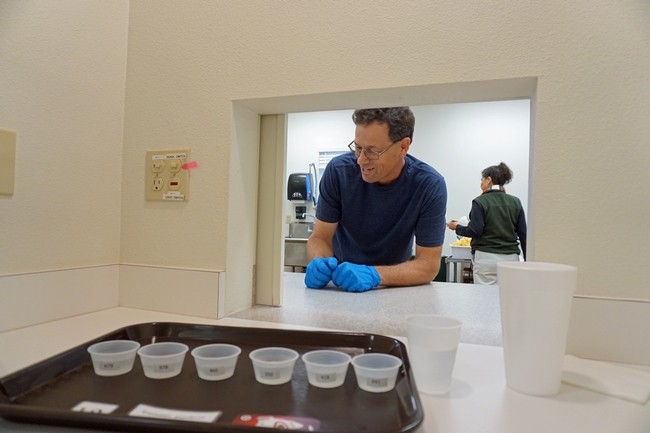
USDA plant physiologist David Obenland, based at the USDA office across the street from Kearney in Parlier, is working with Arpaia to conduct the study at Kearney's sensory laboratory. The 1,100-square-foot laboratory features neutral white paint and broad-spectrum lighting; the ventilation system minimizes distracting odors. Six tasting booths each have small windows that open to the kitchen area, where samples are prepared.
“Previous research has resolved residue issues and determined phosphine is effective in killing the pests,” Obenland said. “But they didn't fully determine whether the process would hurt the fruit.”
The current project compares fruit treated with methyl bromide, phosphine and a cold temperature protocol in which the fruit is held just above freezing for three weeks. In addition to tasting the fruit, volunteers evaluate the fruit's appearance.
“People buy with their eyes,” Arpaia said. “We're asking our participants to compare the fruit visually to see if they detect any differences.”
The research is funded by the California Citrus Quality Council through a grant from the USDA Foreign Agricultural Service.
Científicos de ANR de la UC ayudan a la incipiente industria del aguacate de Tanzania
Los dedicados cultivadores y la labor investigativa de la Universidad de California han hecho de los aguacates de California una historia de éxito. Como parte de la Iniciativa Alimentaria Global de la UC, la cual está canalizando recursos de la UC a los esfuerzos por alimentar de manera sustentable a la creciente población mundial, la experiencia con el aguacate de California puede ayudar a aliviar la inseguridad alimentaria y pobreza en el extranjero.
Dos especialistas de Extensión Cooperativa de la UC descubrieron una forma de hacerlo en Tanzania, África, donde el 69 por ciento de la población vive por debajo del nivel de pobreza y un 16 por ciento de los niños menores de cinco años sufren de desnutrición. En marzo del 2017, el especialista en bio control de la UCCE, Mark Hoddle y la especialista en cultivos subtropicales de la UCCE, Mary Lu Arpaia, viajaron hasta el este de la nación africana para ayudar a los cultivadores con su incipiente industria de aguacates.
A finales del siglo 19, los misioneros alemanes introdujeron los aguacates a Tanzania cuando fue colonizada por esa nación europea. Alemania perdió su influencia sobre el país africano tras la Primera Guerra Mundial, pero los enormes árboles de aguacate no comerciales siguen creciendo en el paisaje local.
Recientemente, los intentos por cultivar de manera comercial la popular variedad de aguacate Hass están ganando fuerza.
Ante la proximidad con el mercado europeo hambriento por aguacates frescos, la compañía Rungwe Avocado plantó 250 acres de la variedad Hass en las zonas montañosas alrededor de Mbeya cerca del lago Malawi, el cual delinea la frontera del suroeste de Tanzania con Zambia y Malawi. Para poder producir al nivel que haría práctica la exportación a Europa y apoyar a los residentes rurales con una opción empresarial viable, aproximadamente 3,700 pequeños agricultores terratenientes, conocidos como subcontratistas, fueron reclutados para cultivar aguacates. Ellos manejan pequeñas parcelas que pueden ser tan pequeñas como 20 árboles hasta superficies más grandes con más de 200 árboles; las granjas participantes se localizan a una elevación de 1,200 a cerca de 6,000 pies.
Sin embargo, esta incipiente industria está experimentando desafíos en su producción, provocando que la compañía contactara a Extensión Cooperativa de la UC. Académicos, especialista y asesores de la UC han conducido investigaciones acerca de los aguacates Hass durante décadas en California y trabajando en estrecha colaboración con los agricultores para ampliar la información que ha apoyado el desarrollo de una industria de alto rendimiento, con árboles que producen frutos de alta calidad, valorados en más de 400 millones de dólares al año.
“Uno de los objetivos de la Iniciativa Alimentaria Global es desplegar las mejores prácticas investigativas y de extensión de la UC para abordar el principal desafío de mejorar la producción alimentaria”, dijo Arpaia. “Por eso fuimos a Tanzania”.
Hoddle y Arpaia visitaron a los cultivadores, técnicos de extensión, gerentes de las empacadoras y expertos en logística. Identificaron los desafíos que enfrenta la industria del aguacate en cuanto a producción, manejo de plagas y frutos.
“La situación en Tanzania es bastante diferente a la de California y también diferente comparada con Centro y Sudamérica, donde también trabajamos con problemas relacionados con la producción de aguacates”, manifestó Hoddle. “Pero identificamos problemas familiares que afectan la administración para los cuales existen soluciones”.
Hoddle examinó, en Tanzania, los árboles de aguacate y sus frutos y recogió especímenes de insectos. Dijo que el daño causado por los insectos era mínimo en el momento de su visita de una semana.
“Eso me sorprendió debido a la biodiversidad de insectos en África”, señaló el experto. “Había muy poca evidencia de hojas consumidas. Había alguna evidencia de daño en los frutos causado por insectos alimentándose de la cáscara, no parece que tienen el gorgojo perforador del fruto u orugas que vemos comúnmente en partes de México, Centro y Sudamérica”.
Un asunto crítico es extender la información entomológica a las granjas de la periferia para mejorar su habilidad para identificar y manejar a los insectos benéficos y plagas del cultivo.
“No cuentan con los lentes de aumento, los viales para muestras y cajas para insectos que por lo general usamos para la identificación de insectos”, manifestó Hoddle. “Les enseñé mi navaja Leatherman, la cual puede ser usada para cortar el fruto y detectar el daño. Ellos necesitan de estas herramientas básicas”.
Siendo una experta en la post cosecha, Arpaia pudo identificar distintas maneras para mejorar las prácticas de recolección, manejo, almacenamiento y transportación que pueden dar como resultado la llegada de fruta de alta calidad a Europa.
Los dos científicos elaboraron un informe, el cuan enfatiza la necesidad de proveer a los cultivadores de la periferia con equipo básico e información agronómica.
“Queremos ayudarles a ser mejores agricultores de aguacates, para que la cosecha pueda contribuir a la economía del país”, dijo Arpaia. “El impulsar esta industria también dará a al pueblo de Tanzania la oportunidad de agregar los aguacates nutritivos a su alimentación”.
UC ANR scientists help fledgling Tanzania avocado industry
Dedicated growers and research support from the University of California have made avocados a California success story. As part of the UC Global Food Initiative, which is channeling UC resources toward sustainably feeding the world's growing population, the California avocado experience can help alleviate food insecurity and poverty overseas.
Two UC Cooperative Extension specialists found a way to do that in Tanzania, Africa, where 69 percent of the population live below the poverty line and 16 percent of children under 5 are malnourished. In March 2017, UCCE biocontrol specialist Mark Hoddle and UCCE subtropical crops specialist Mary Lu Arpaia traveled to the east African nation to help growers there with their fledgling avocado industry.
In the late 19th Century, German missionaries introduced avocados to Tanzania when it was colonized by this European nation. Germany lost influence over the African country following World War I, but huge non-commercial avocado trees still thrive in the landscape.
Recently, attempts at commercial production growing the popular Hass variety are gaining momentum.
With proximity to a European market hungry for fresh avocados, Rungwe Avocado Company planted 250 acres of the Hass variety in the southern highlands around Mbeya near Lake Malawi, which establishes the border of south western Tanzania with Zambia and Malawi. In order to grow production to a level that would make the export to Europe practical and to support rural residents with a viable business option, approximately 3,700 small landholder farmers, known as outgrowers, were recruited to grow avocados. They manage small plots with as few as 20 trees to larger acreage with more than 200 trees, with participating farms ranging in elevation from 1,200 to nearly 6,000 feet.
However, this fledgling industry is experiencing production challenges, prompting the company to contact UC Cooperative Extension. UC faculty, specialists and advisors have conducted research on Hass avocados for decades in California and worked closely with growers to extend information that has supported the development of an industry with high-yielding trees producing premium fruit valued at more than $400 million per year.
“One of the aims of the Global Food Initiative is to deploy UC's best research and extension practices to address the key challenge of improving food production,” Arpaia said. “That's why we went to Tanzania.”
Hoddle and Arpaia visited growers, extension technicians, packing house managers and logistics experts. They identified production, pest management and fruit handling challenges faced by the avocado industry.
“The situation in Tanzania is quite different than California, and also different compared to Central and South America, where we have also worked on avocado production issues,” Hoddle said. “But we identified familiar issues that affect management for which there are solutions.”
Hoddle examined the Tanzanian avocado trees and fruit, and collected insect specimens. He said the insect damage was minimal at the time of the week long visit.
“That surprised me because of the insect biodiversity in Africa,” he said. “There was little evidence of heavy leaf feeding. There was some evidence of fruit damage caused by insect feeding on the skin, but they don't seem to have fruit boring weevils or caterpillars that we commonly see in parts of Mexico, Central and South America.”
A critical issue is extending entomological information to the outlying farmers to improve their ability to identify and manage beneficial insects and crop pests.
“They don't have the magnifying loops, collecting vials and insect boxes that we regularly use for insect identification,” Hoddle said. “I showed them my Leatherman tool, which can be used to open up fruit and look for damage. They need these basic tools.”
A post-harvest expert, Arpaia was able to identify ways to improve picking, handling, storage and shipping practices that would result in top quality fruit arrival in Europe.
The two scientists produced a report, which emphasized the need to provide outlying growers with basic equipment and agronomic information.
“We want to help them be better avocado farmers so the crop can be a greater contributor to the country's economy,” Arpaia said. “Boosting this industry will also give people all over Tanzania the opportunity to add nutritious avocados to their diets.”
Have you tasted an avocado lately?
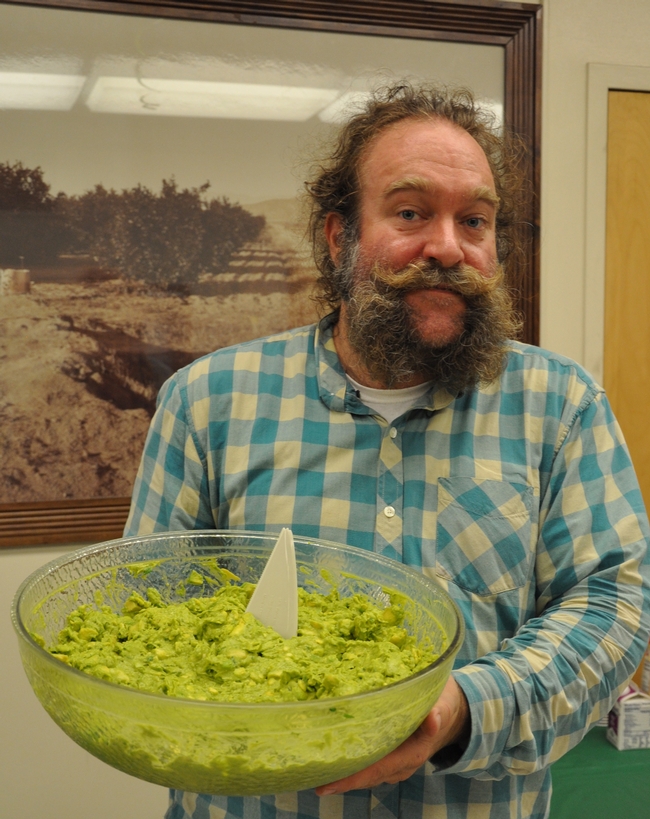
Eric Focht, a staff research associate in the Arpaia lab, helps organize the tastings; the guacamole he prepares specially for the occasion serves as an additional attraction. Focht has been working on avocados since 1999, the year he joined UCR as a staff member. His relationship with the campus, however, began before then; his father, now retired, was a professor on campus.
Typically, participants of the avocado tastings sample six avocados which come from UC ANR's South Coast Research and Extension Center in Irvine. “Hass control fruit are purchased from or donated by a packing house,” Focht says.
First, participants do a visual assessment of the fruit, evaluating texture, size and color. Next they step into a room where they do the blind tastings.
“The data is compiled and used to assess, among other things, which of our new breeding selections shows promise and should be pushed for eventual release,” says Focht, whose duties include coordinating field activities, designing field layouts, generating maps and databases, selecting avocado varieties of interest, interacting with growers and the public, troubleshooting, and directing the day-to-day operations of the lab when Arpaia is away.
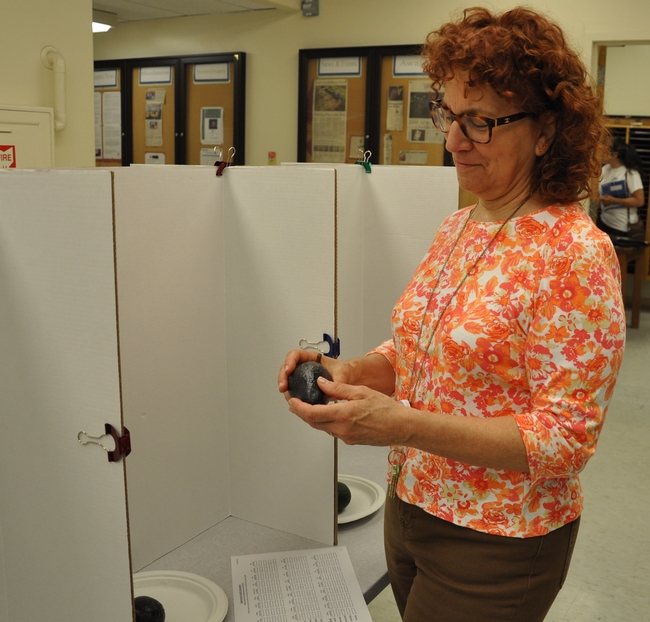
“Right now our 465518-99 has been performing very well,” he says, “but in former years, its peak season is February through April. In the fall, Reed is always a good fruit with good flavor and texture. I prefer a fruit that peels easily and has good flavor. If it doesn't peel clean from the skin, I tend to overlook it for something else with good flavor and convenient packaging.”
The avocado growing season varies from variety to variety. By planting out several varieties, it is possible to have avocados year round in one's garden. Focht explains that the growing season varies regionally as well.
“The season in San Luis Obispo is months later than it is in San Diego,” he says.
Most avocado acreage in California is currently in Northern San Diego County. Most avocado acreage in the U.S. is in California. Other states with avocado industries include Florida and Texas. Worldwide, avocados are grown in Mexico, Chile, Peru, Israel, Australia, South Africa and New Zealand.
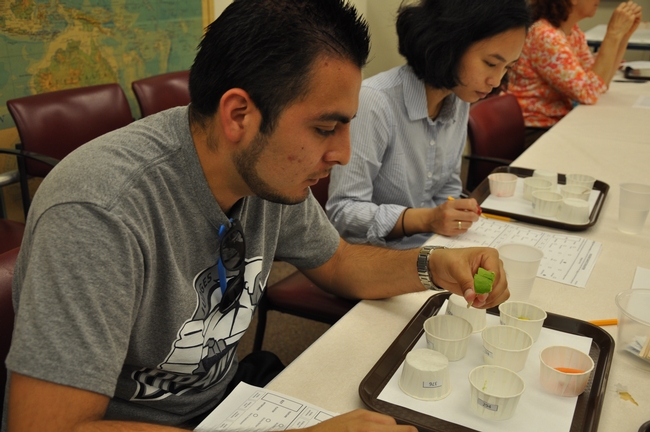
“An acre of avocado trees typically requires 2.5-4 acre-feet of water per year depending on weather and other factors,” he says. “The drought is resulting in lost acreage as farmers can either not afford or not find enough water for their trees. Successful farmers are having to modify their cultural practices to stay competitive.”
The next avocado tasting at UCR will be Aug. 12, 2015. For more information about the tastings, contact Focht.
Avocado production in the San Joaquin Valley gets closer

Avocados are native of semi subtropical high elevation rainforests in Mexico and Central America. A delicious and highly nutritious fruit, the cultivation of avocado has spread around the world. In California, growers are having commercial success in areas with year-round mild climates, such as San Diego and Ventura counties.
Though avocados are frost sensitive to be sure, it is not the cold winter climate that is the greatest impediment to avocado production in the state's inland valleys. It's the heat.
“Plant leaves have stomata, small openings that allow water vapor to move out of the plant to cool the leaf surface,” Arpaia said. “It works something like perspiration on people. Moisture exits the pores and cools the skin.”
The stomata on the leaves of Hass avocados – the variety most favored by California consumers – close when the temperature rises above 90 degrees. No moisture is released from the closed stomata and the plant overheats, causing fruit drop.
“To grow avocados in the valley, we need to have a variety that can tolerate heat better than Hass,” Arpaia said.
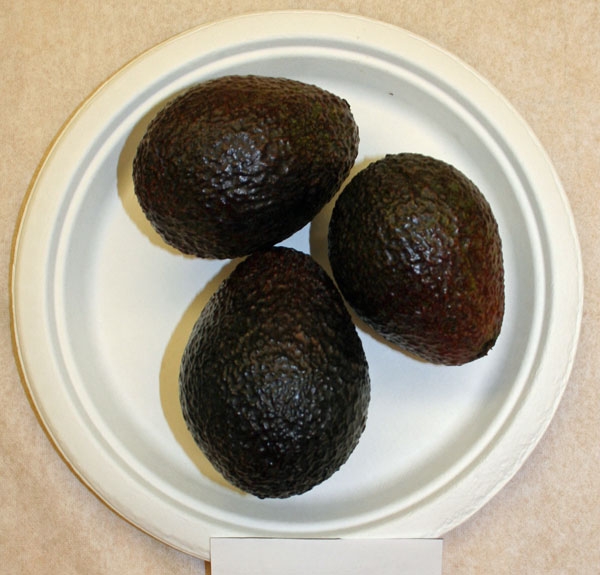
“The ones that we're testing in the field have eating quality comparable to Hass,” Arpaia said.
Lindcove is situated where the valley floor is gently rising toward the Sierra Nevada. The slope allows cold air to slip down to lower elevations, giving farmers in the area an advantage of a few degrees in the winter. The geography has made the area an important location for citrus production. But heat-tolerant avocados could be an alternative.
East-side citrus farmers may be looking for other options if Huanglongbing (HLB) disease makes its way to the area. Already, the pest that spreads HLB, Asian citrus psyllid, is established in some parts of the valley and spreading. Once a tree is infected with HLB, it cannot be cured.
“Growers have made good money on avocados,” Arpaia said. “In the San Joaquin Valley, water is relatively cheap and we have better water quality than San Diego County. There are good, well-drained soils. Avocados' frost sensitivity is similar to lemons. If farmers have property where they can grow lemons, they could try avocados.”
An initiative to enhance competitive and sustainable food systems is part of the UC Division of Agriculture and Natural Resources Strategic Vision 2025.

